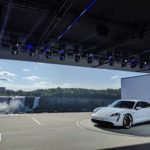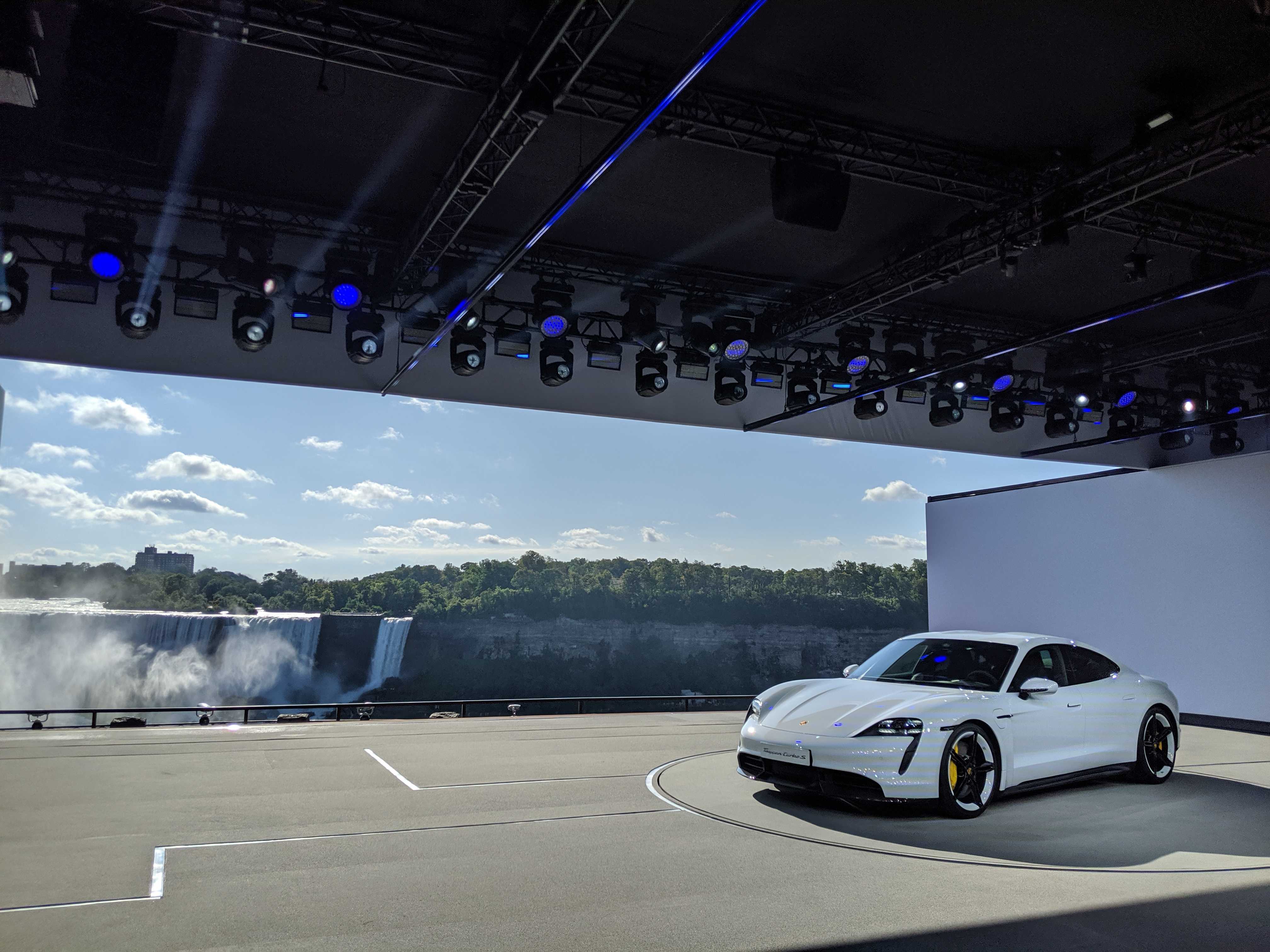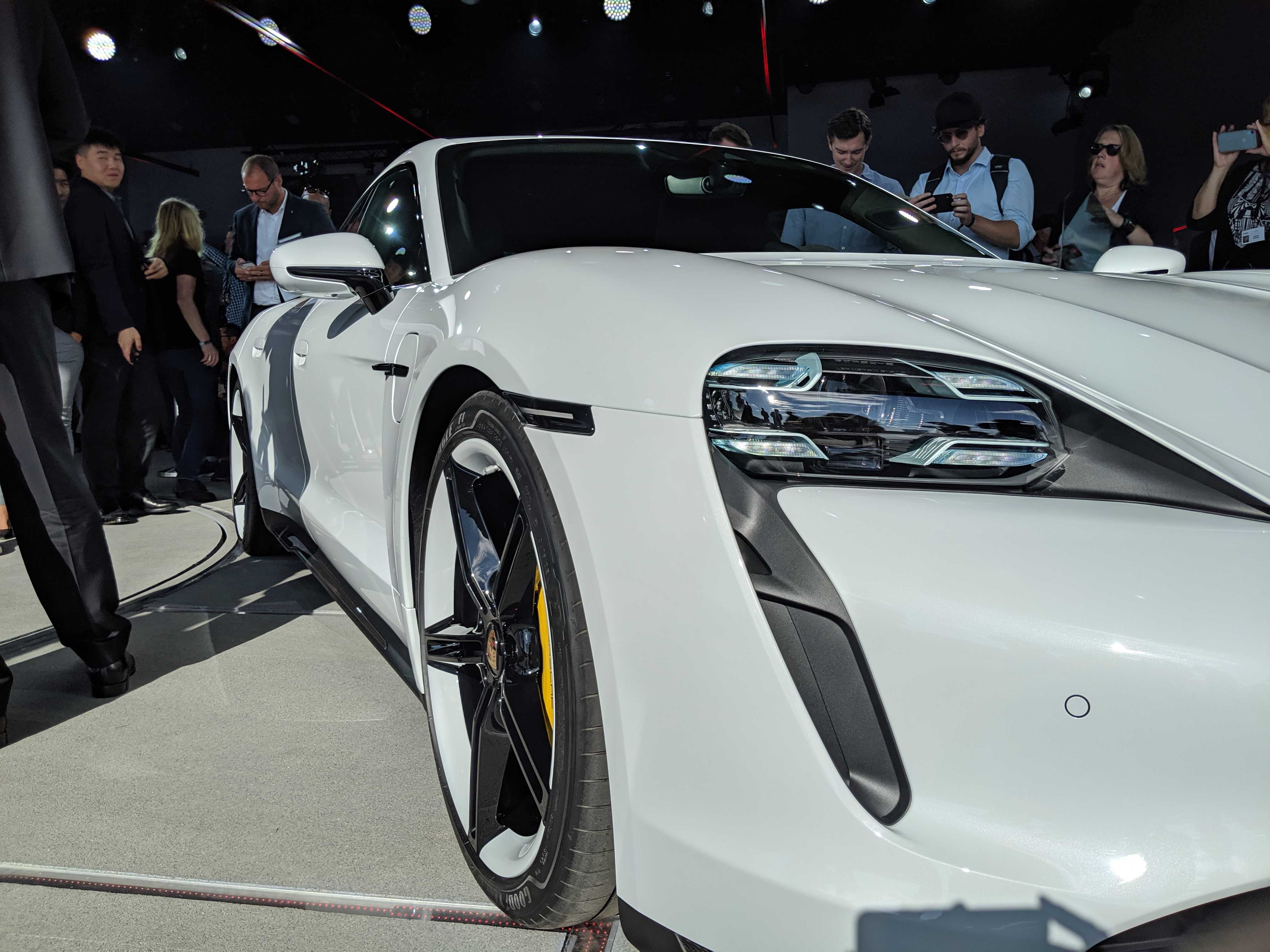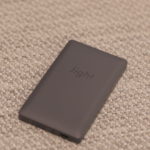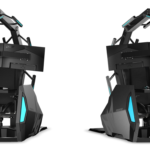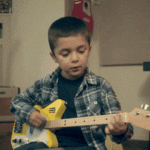Porsche’s all-electric evolution: from sketch to Mission E concept to Porsche Taycan
The Porsche Taycan, the German automaker’s first all-electric sports car, has arrived. After four years of development, the company lifted the veil Wednesday on the Porsche Taycan.
Here’s a look back at how this four-door electric vehicle developed from a few sketches to the Mission E concept, and then to the Taycan prototype and final production model.
September 2015: Porsche unveils the Mission E at the Frankfurt International Motor Show. Porsche says the concept has the first 800-volt drive system, will produce more than 600 horsepower (or 440 kilowatts in system power) and about a 310-mile battery range. Other concept-era stats include all-wheel drive and all-wheel steering, the ability to go from zero to 100 km/h (62 miles per hour) in less than 3.5 seconds and a charging time of around 15 minutes to reach an 80% charge of electrical energy.
The tech inside the concept includes instruments that are intuitively operated by eye-tracking and gesture control, some even via holograms — highly oriented toward the driver by automatically adjusting the displays to the driver’s position.
December 2015: Porsche AG board funds Mission E. This means Porsche makes it official and announces plans to bring the all-electric four-door sports car into production by the end of the decade. The company says it won’t hit the road until at least 2020.
Porsche also says it will spend more than $760 million and add 1,000 new jobs at its Stuttgart-Zuffenhausen facility to produce the all-electric sports car.
January 2016: Porsche AG Chairman Oliver Blume reiterates the company’s commitment to plug-in hybrids and the all-electric Mission E concept car. Porsche will spend $1 billion to develop the Mission E, Blume says at the time. That’s a nearly 30% increase from what the company had previously shared about its investment.
September 2017: Blume indicates that the Mission E will go on sale at the end of 2019. The company is preparing to send its prototypes onto public roads.
Blume doesn’t provide details on the price. However, he tells CAR in an interview that the all-electric four-door sports car is designed to sit between the Panamera and the 911 in Porsche’s portfolio. And it will be priced like an entry-level Panamera, which is $85,000.
June 2018: Porsche gives electric sports car an official name. It will be called the Porsche Taycan, which is pronounced tai-kan. The automaker says Taycan is roughly translated as “lively, young horse” in a nod to its iconic emblem.
March 2019: Porsche’s Blume says during the 2019 Geneva International Motor Show that more than 20,000 people have registered to join a list of prospective buyers for the Taycan, which requires a down payment of €2,500.
The company had planned for an annual production of 20,000 Taycans. Due to higher than expected interest, Porsche decides to increase production capacity, Blume says in an interview with autogazette.de.
July 2019: Porsche Taycan reservations have hit 30,000 deposits, according to Bloomberg and Porsche HR head Andreas Haffner in an interview with German business publication Handelsblatt.
August 2019: Porsche announces it will integrate Apple Music into the Taycan sports car, the first time the music streaming service has been offered as a standalone app within a vehicle. The Apple Music integration will begin with the Taycan. However, the relationship between Apple and Porsche won’t end there, Porsche North America CEO Klaus Zellmer tells TechCrunch.
August 2019: Porsche Taycan sets a narrow, yet notable record lap time at the famous Nürburgring Nordschleife test track in Germany. The vehicle completes the 12.8-mile course in 7 minutes and 42 seconds. This is the fastest lap for a four-door electric vehicle. The record time was set in a pre-series Taycan driven by Lars Kern.
Powered by WPeMatico
Porsche Taycan vs Tesla Model S: Spec for spec, price for price
The Porsche Taycan is a missile aimed straight at Tesla. The German electric sedan packs everything needed to give the Model S its first real fight. The Porsche is just as fast, is sleeker thanks to a lower drag coefficient and packs several technical goodies missing from Tesla’s sedan. However, the Tesla Model S has a longer range and is much less expensive.
Specs alone cannot properly illustrate a vehicle’s worth, but they’re a good starting point. What follows are several key areas comparing the two trim levels of the Porsche Taycan against the two versions of the Model S currently available.
The chart here does not list self-driving features or capabilities, a key feature to the Tesla Model S. As of writing, Porsche has yet to revel any self-driving capabilities of the Taycan besides the standard driver assistance features found on all Porsche vehicles.
Please note, the EPA has yet to release official range numbers for the Porsche Taycan. Currently, Porsche is only noting that the new European rating system, (WLTP), rates the sedan with the max range of 279 miles. The EPA says the Model S Long Range has a range of 370 miles.
- Source: Motor Trend
Powered by WPeMatico
Porsche unveils the $150,900 Taycan Turbo electric sedan
Porsche has poured more than $1 billion into the development of its first all-electric vehicle, a sleek four-door specimen that marks the beginning of a new chapter for the German automaker and its biggest bet in more than a generation.
On Wednesday, in three simultaneous events in Canada, China and Germany, Porsche finally introduced the world to the vehicle that has been more than four years in the making. TechCrunch was on hand for the reveal in Canada, a splashy event held in a building erected just for the occasion on the edge of Niagara Falls. It was here that Porsche showed off not one, but two flavors of the Taycan.
Behold, the Porsche Taycan Turbo S and Porsche Taycan Turbo, two electric machines with the styling, power and performance one would expect from the German automaker. Oh, and range between 250 and 280 miles, depending on the variant.
Both of these Taycans fall into the more expensive, more powerful category of its upcoming portfolio, with base prices of $185,000 and $150,900, respectively.
All three Porsche Taycan events were staged near renewable energy installments — hydropower at Niagara Falls in Canada, solar in Neuhardenberg near Berlin and a wind farm on Pingtan Island, less than a mile from the Chinese city of Fuzhou — a physical symbol of Porsche’s move to electrification.
“The Taycan stands for the change necessary for Porsche to remain Porsche,” Detlev von Platen, Porsche AG board member of sales and marketing said during the presentation.
And it’s not stopping at the Taycan. By 2025, half of all Porsche vehicles will be electrified, according to von Platen.
Less powerful variants (and therefore less expensive) of these all-wheel drive vehicles will follow this year, and the first derivative to be added will be the Taycan Cross Turismo at the end of 2020.
The Taycan may represent a new direction for the automaker, but there’s still no mistaking this electric vehicle for a Porsche. The Taycan has a big and low stance with a body line that still looks and feels like a Porsche. Bigger than a 911 and smaller than a Panamera, the body of the Taycan is wide and flat with contoured wings and a sporty roof that slopes down to the sharply emphasized and classic Porsche rear.
Inside is the good stuff. Both the Porsche Taycan Turbo S and Porsche Taycan Turbo are outfitted with two electric motors, one on the front axle and one on the rear axle, a two-speed transmission installed on the rear axle, and an 800-volt architecture — the same technology that helped the company’s 919 Hybrid win the 24 Hours of Le Mans three times in a row.
The interior of the Taycan, which was revealed last month, includes a sleek all-digital dashboard clearly inspired by the 1963 Porsche 911.
Now to the power. The flagship Turbo S version of the Taycan can generate up to 750 horsepower (560 kW) of power in combination with “launch control” and overboost features that translate into accelerating from zero to 60 miles per hour in 2.8 seconds. The Taycan Turbo can produce up to 670 horsepower (500 kW), allowing it to go from a standstill to 60 mph in 3 seconds. Both vehicles have a top track speed of 161 mph.
The Taycan is ready for the race track,” Stefan Weckbach, vice president of the Taycan and Porsche Battery Electric Vehicle Product Line, said during the event Wednesday.
And then there’s the 800-volt system, double the more commonly used 400 volt architecture found in other electric vehicles. The 800-volt system allows the Taycan to charge from 5% to 80% in 22.5 minutes with a maximum charging power of up to 270 kw. The vehicle’s 800-volt system will allow the Taycan to add 62 miles of charge in a snappy five minutes, Weckbach said.
The overall capacity of the 800V high-voltage battery is 93.4 kWh. Porsche is throwing in three years of free charging at hundreds of Electrify America public stations that will blanket the U.S. in the coming months.
The EPA range estimate for the North American market is pending for both vehicles. Under Europe’s WLTP estimates, the Turbo S can travel 256 miles on a single charge, while the Turbo has a range of 280 miles.
Powered by WPeMatico
Spotify expands its new Premium Duo plan to Latin America
Spotify’s newest paid subscription, the Premium Duo plan designed for two people, first launched this spring as a pilot test in Ireland, Colombia, Chile, Denmark and Poland. Today, Spotify says the plan is being more broadly rolled out to 14 more Latin American markets.
The new markets include: Argentina, Bolivia, Costa Rica, Dominican Republic, Ecuador, El Salvador, Guatemala, Honduras, Mexico, Nicaragua, Panama, Paraguay, Peru and Uruguay.
The Duo plan is meant mainly for couples, though it could apply to roommates or any other two people who share the same home address.
In terms of pricing, it’s a step up from a single Premium subscription but more affordable than a Family Plan, as it’s limited to just two accounts. However, the Duo plan is discounted so it’s a better deal than buying two separate Premium accounts.
The benefits are similar to those on the Family Plan. Like the larger group plan, Duo keeps each user’s music preferences and recommendations separate from one another. And like the Family Plan, which recently added a custom mix composed of tracks everyone in the family enjoys, the Duo subscription also includes its own shared playlist, the Duo Mix. Members can easily share their playlist libraries with one another, too.
Despite now reaching 19 total markets, Spotify still refers to the Premium Duo plan as a “pilot,” which typically means the company hasn’t fully committed to bringing the service to all its users at some point. Instead, that terminology typically implies the company is continuing to evaluate the new service’s impact.
In Spotify’s case, Premium Duo’s launch in March hasn’t yet led to a massive subscription bump. When reporting its Q2 2019 earnings, the company said it added 8 million new subscribers in the quarter, which was below the estimated 8.5 million figure. It now has 232 million monthly users and 108 million paying subscribers.
That said, Duo hasn’t reached many of Spotify’s key markets where such a plan could have more of an impact to subscriber counts, including the U.S.
If you live in a supported market and already have a Premium plan you can visit your Account page on Spotify’s website to add a partner and upgrade. Both plan members will need to share the same home address.
Powered by WPeMatico
Light Phone’s founders discuss life beyond the smartphone
For a seemingly tough pitch, Light has had little trouble getting noticed. The company has run two successful crowdfunding campaigns for a pair of minimalist phones designed to augment or replace the smartphone. Today the startup announced that it will be shipping the second version of the handset, which introduces a handful of features back into the product, like texting.
Ahead of the launch, we spoke to Light’s founders, Kaiwei Tang and Joe Hollier, about funding, feature glut and the future of the handset.
How it all began
Brian Heater: The project essentially started as an in-house at Google, is that correct?
Kaiwei Tang: We met in 2014 in Google’s incubator called 30 Weeks. That’s where we met and started talking about Light Phone eventually.
Joe Hollier: 30 Weeks program was an experiment that came out of the Google creative lab, and their hypothesis was that if given the right resources, guidance, designers might be able to create new creative startups, and that designers should be on the founding table of companies.
So their hypothesis was that we as designers would be able to imagine a new startup in the software application space, and then through designing the end product, which is how the Google creative lab works, we’d be able to inspire the engineers and investors that we would need to make the product a reality.
Brian: What did you see in the market that wasn’t being fulfilled by countless different smartphone companies?
Joe: People were feeling overwhelmed by their smartphone and craving some escape, and we didn’t really see an escape.
Powered by WPeMatico
Light’s new minimalist phone is available now for $350
There’s that pesky catch-22 you’ve got to get out of the way when discussing the Light Phone and its successor. There’s an inherent irony to a piece of technology created with the express purpose of weaning us off technology. But it’s 2019, and inherent irony is kind of the name of the game.
Light certainly has its share of supporters. As the company announces that it has both begun shipping the Light Phone II to Indiegogo backers and made the product more directly available through its site at $350 (via pre-order), it’s also revealing its funding for the first time. As of this writing, the company has raised $12.3 million.
The crowdfunding parts we knew about, of course. The original phone raised a solid $400,000 on Kickstarter. The Indiegogo campaign for the second version blew that out of the water at $3.5 million with an emphasis on pre-orders. Turns out VCs are getting in on the action, as well, with $8.4 million raised in seed. Hinge Capital, Bullish, White Bay Group, Able Partners, Product Co-Op and HAX have all chipped in, but the leader is the most interesting of the bunch.
Foxconn is the biggest investor of the bunch. The manufacturing giant, naturally, is also helping the company build the handsets and scale things as Light looks toward retail channels beyond its current online offering.
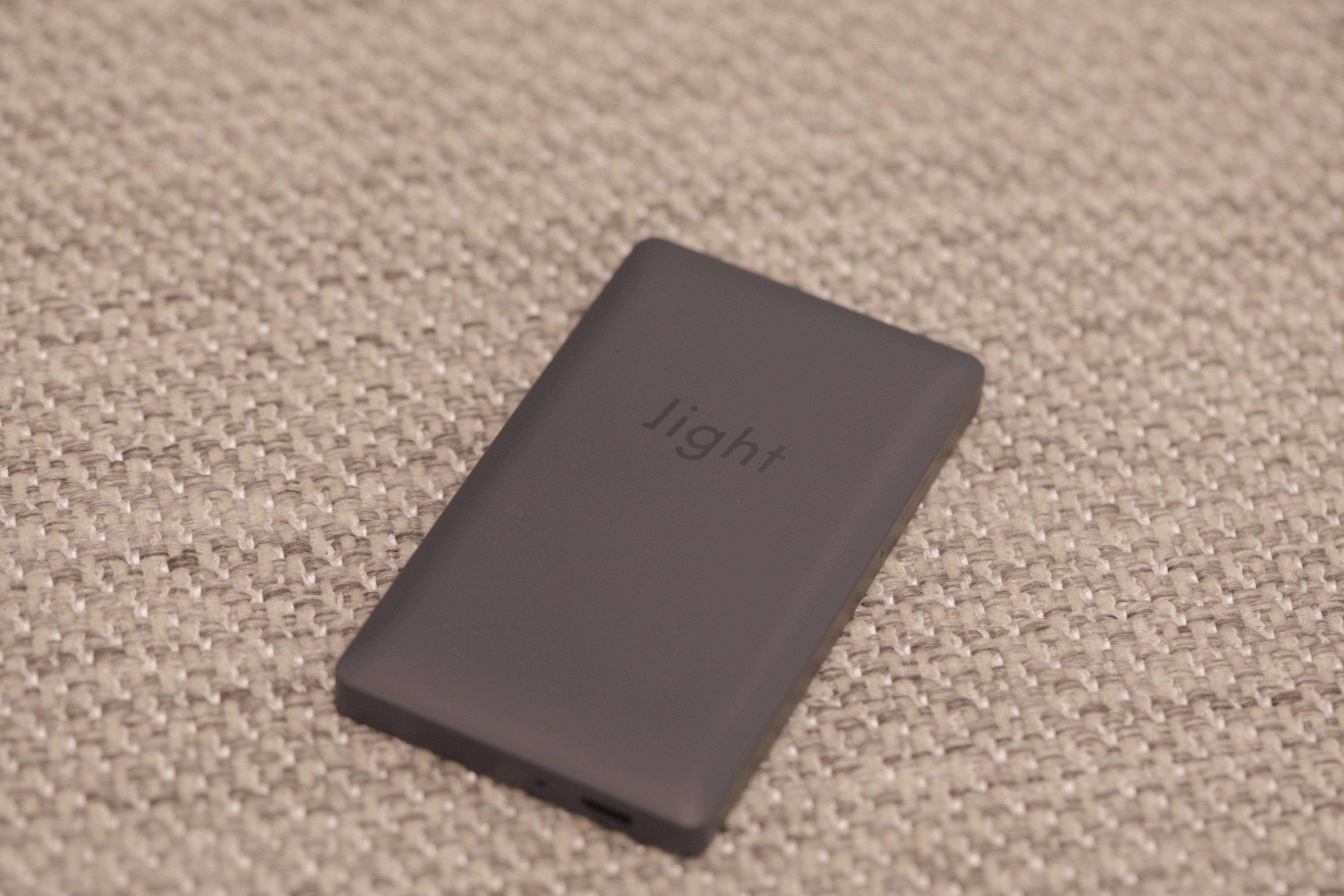
“They’ve been building smart phones for 20, 30 years,” co-founder Kaiwei Tang told TechCrunch. “When we came to them with the first Light Phone, it was just a simplified, voice-only device. Right after the pitch, I was talking to the sales VP who said, ‘hey Kai, I need Light Phone right now. Smartphone has ruined my life. My kids don’t talk to me.’ ”
A number of other high-profile angel investors were equally taken with the notion of a simplified device that could deliver core functionality while weaning users off of smartphone dependence. John Zimmer (Lyft), Michael Mignano and Nir Zicherman (Anchor), Tim Kendall (Moment) and Scott Belsky (Adobe) have all invested, as well.
Like the original Light Phone, the new version presents a sort of built-in paradox for its creators. If the underlying idea is stripping non-core functionality, isn’t introducing a second version with new features somewhat counter-productive?
The new model will get ridesharing (partner to be announced), music playback (likely via on-board storage for starters), turn-by-turn direction and find my phone features. Among other things, the functionality of those features will be limited by the E Ink display. The phone also finds the company making the jump from 2G to LTE. Users can pop in a SIM from AT&T, Verizon or T-Mobile.
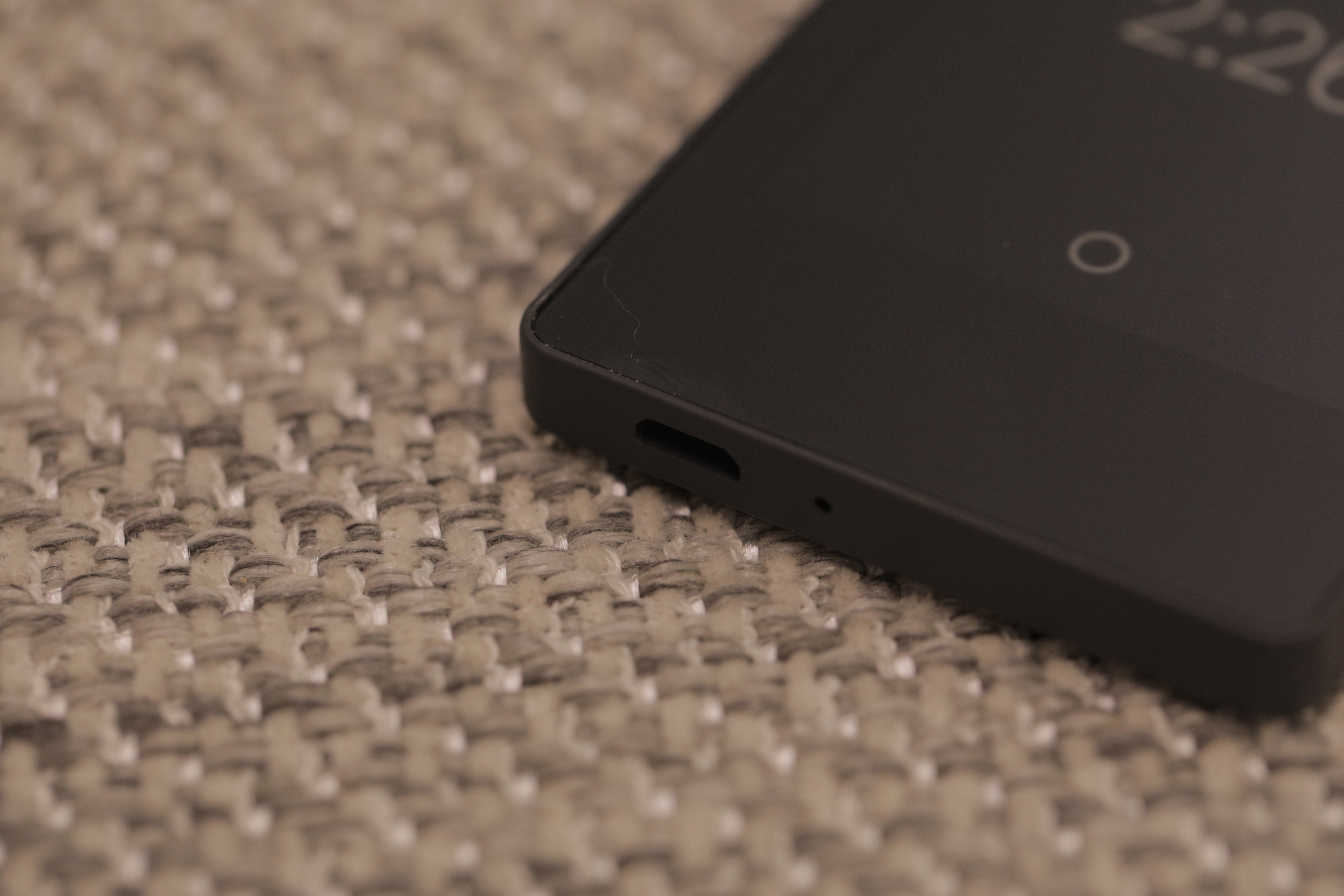
“To use an analogy, we’re offering a beautifully designed screwdriver that does one thing well,” says Tang. “Obviously, the Light Phone being an E Ink screen and small size limits it to the users. We don’t encourage people to play videos, or watch video on it. But making a phone call, getting a taxi, listening to music (yes, there’s a headphone jack), recording a voice memo. Maybe down the road they have a calendar reminder, those are the simple tools; it has a clear goal.”
The Light Phone II is probably the least pretty device I’ve reviewed for this site. It’s small, but chunky, like a shrunken e-reader with a screen too small to actually use for e-books. It’s got just enough functionality to (hopefully) free you of your smartphone for hours at a time.
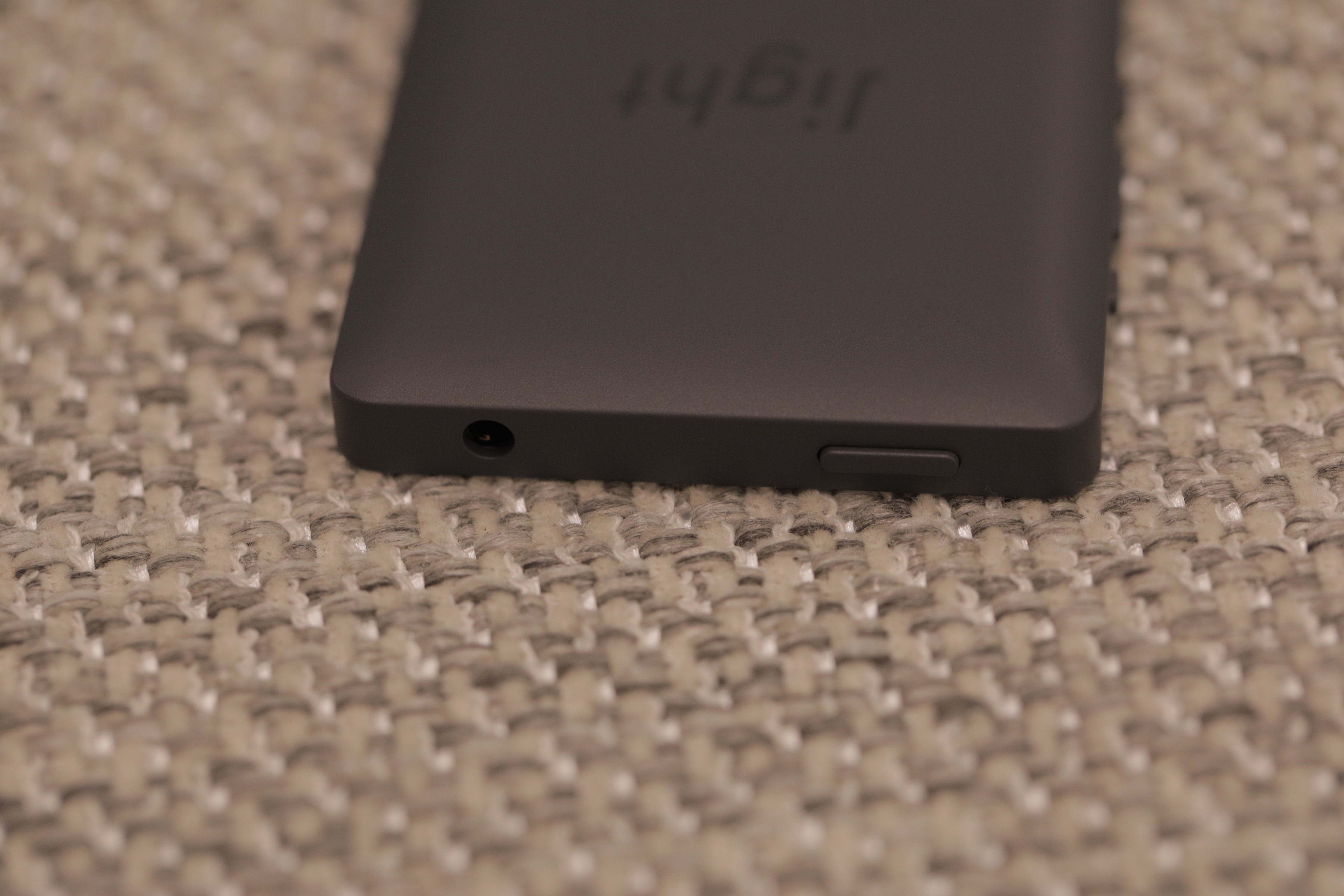
Light says it has sold “tens of thousands” of units. It shipped 15,000 of the first generation and somehow has in the neighborhood of 40,000 reservations it hasn’t filled for the device. The company is looking to push those users toward the Light Phone 2. That device, meanwhile, has around 10,000 pre-orders at present.
Powered by WPeMatico
Depop CEO Maria Raga tells us everything about social e-commerce at Disrupt Berlin
Depop started as a simple app to post photos of clothes and offer them for sale. But it has become a cultural phenomenon with millions of users, a vibrant community and even some superusers making a living from the platform. That’s why I’m excited to announce that Depop CEO Maria Raga is joining us at TechCrunch Disrupt Berlin.
Many have tried to merge a social app with a shopping experience, but few have succeeded. Depop is one of them. If you’re an Instagram user, the app looks familiar with its outline icons. But instead of following brands and sometimes buying new items, Depop is all about vintage items, rare sneakers and things you simply can’t find on a regular social network.
Depop users can follow other users, discover items from their favorite brand, get personalized recommendations and, of course, buy and sell items. It’s a social experience that works particularly well on mobile and makes shopping more personal.
Selling something on Depop is as easy as posting photos on a social app. You enter a description, a location, a brand and a price and you’re good to go. After that, other users can buy stuff directly from the app. You can then ship your items and get your money on your PayPal account.
And it’s been a massive success. There are currently more than 13 million users — the vast majority of them are under the age of 26. The company has handled more than $500 million of gross merchandise value since its launch.
Interestingly, some superusers thrived on the platform. Those users are talented when it comes to spotting and acquiring limited-edition clothes, sneaker drops and other valuable items. They sell them on Depop, with some of them generating as much as $100,000 of revenue per year.
Under Maria Raga, Depop has raised more than $100 million. Earlier this summer, the company announced a $62 million funding round led by General Atlantic. It’s clear that Depop is now thriving as both a social app and a marketplace. And I can’t wait to hear how Maria Raga did it.
Buy your ticket to Disrupt Berlin to listen to this discussion — and many others. The conference will take place December 11-12.
In addition to panels and fireside chats, like this one, new startups will participate in the Startup Battlefield to compete for the highly coveted Battlefield Cup.
Maria Raga is the CEO of Depop. Since being promoted to the position in 2016 from VP of Operations, she has presided over every element of the business from finance and engineering to marketing and product. An open and collaborative CEO, Maria is dedicated to her team, which has grown to 150+ employees in 5 offices worldwide in the last three years alone. Perhaps most importantly, since she took over as CEO, she has raised close to $100M in funding, which has helped to grow and nurture the community on Depop – now 13 million users.
Prior to Depop, Maria held successively roles at Groupon and Privalia. Having graduated from Insead MBA, Maria joined Bain & Company as a consultant.
Born in Valencia, Spain, Maria now resides in London with her husband and 2 children. In her spare time, Maria enjoys connecting with Depop’s entrepreneurial Gen-Z constituency and promoting women in the workplace
Powered by WPeMatico
Acer announces a $14,000 gaming chair because why not
This isn’t a chair. This is a rig. It’s a throne. It’s a gaming monster. The Acer Predator Thronos Air Gaming Chair is a $13,999 device that has everything, including a massage function.
The Predator Thronos Air is a massive steel structure that encases gamers in an immersive experience. There are three monitor mounts, an adjustable keyboard and mouse tray, a footrest and a complex cable management system to hide all wires connecting everything together. If that’s not enough, Acer has several available accessories like a cup holder, cameras and hubs.
The only things missing are the gaming computer, monitors, keyboards and, well, you.
This is Acer’s second gaming chair, and this one is half the price of the original. Announced at IFA 2018, the $30,000 Predator Thronos Gaming Chair packs even more goodies, including a powered recline mode to tilt the entire rig 140 degrees. This version requires a ground floor location and a floor that can support 715 pounds.
These sorts of gaming rigs have been available for several years and provide a unique vantage point for gamers and flight sim operators. Many can be had for less than these Acer examples, but few have a more imposing name than Thronos.
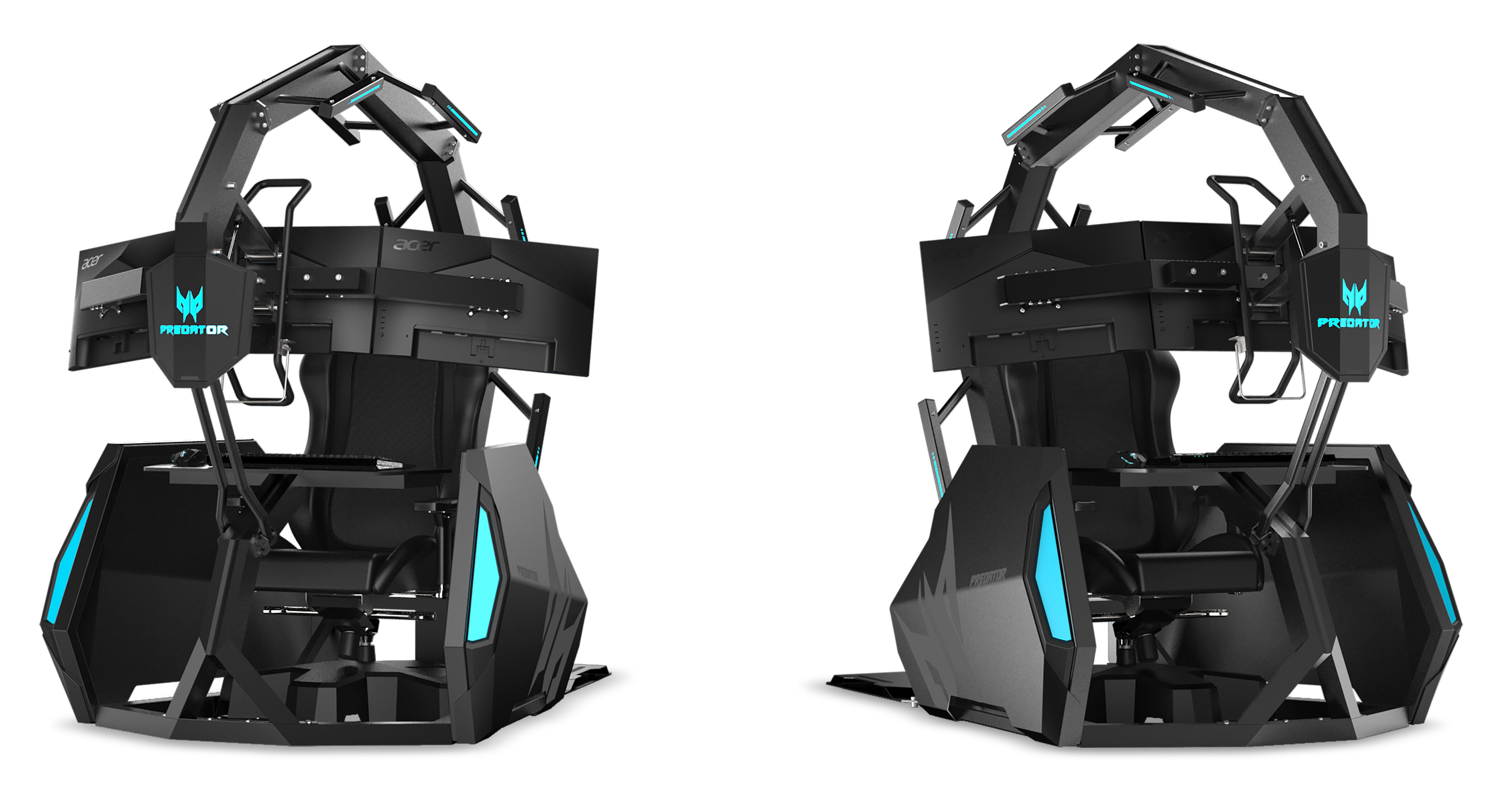
Powered by WPeMatico
Loog launches a trio of new educational guitars
Educational guitar maker Loog returned to Kickstarter this week, some eight years after it first hitting the crowdfunding site. This fourth campaign from the company features a trio of instruments aimed at helping accelerating the learning process.
There are three models, each aimed at a different age group: the Loog Mini (ages 3+), Loog Pro (ages 8+) and Loog Pro VI (ages 12+). The latter of which is the company’s first guitar to sport the standard six strings (versus the three it usually offers).
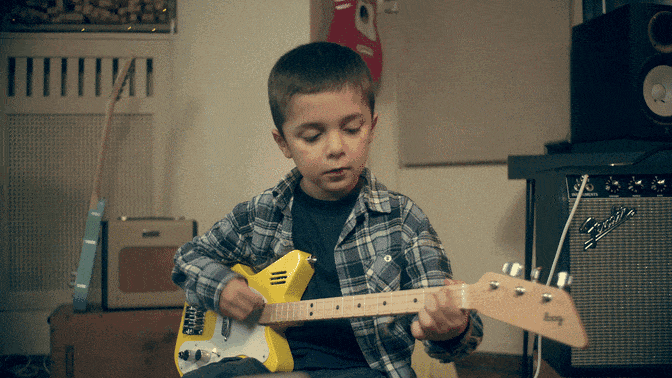
All have a built-n speaker and amp, reducing the need for additional accessories for a kid’s first instrument. They’re also designed to work with the company’s app, which now utilizes augmented reality (guitAR, if you will), to overlay instructions when using the front facing camera on a mobile device. The are flash cards (for chords), videos and games on-board, as well.
The app also has a song book, featuring a wide variety of popular artists, ranging from The Beatles to Taylor Swift. Kids can slow down and mute tracks to play along karaoke-style, while recording themselves in the process.
Kickstarter prices start at $99 for the Mini, versus $150 at retail. The company keeps going back to the crowdfunding well, but the model has worked pretty well so far. Loog’s started to gain some traction in the music education world and, as evidence by its Kickstarter video, landed in the hands of a couple of actual rockstars in the process.
Powered by WPeMatico
Reach Robotics is closing up shop
Reach Robotics, the company behind the spider-like MekaMon robot you might’ve seen on the shelves at the Apple Store, is closing down.
Billed as the “world’s first gaming robot,” MekaMon is part video game, part STEM tool. You could plop it down on the carpet and point your phone at it to battle virtual augmented reality enemies, face off against other MekaMon owners in multiplayer battles or build custom programs for the robot on top of Apple’s Swift Playgrounds.
Here’s a video we did on Reach Robotics a few years back:
Reach Robotics was founded in 2013. They released their MekaMon robot in November of 2017, just a few months after raising a $7.5 million Series A.
News of the shutdown comes from Reach Robotics co-founder Silas Adekunle on LinkedIn (as first noted by The Robot Report), where he writes:
The consumer robotics sector is an inherently challenging space – especially for a start-up. Over the past six years, we have taken on this challenge with consistent passion and ingenuity. From the first trials of development to accelerators and funding rounds, we have fought to bring MekaMon to life and into the hands of the next generation of tech pioneers.
Unfortunately, for Reach Robotics, in its current form at least, today marks the end of that journey.
It doesn’t sound like Adekunle is finished with robotics altogether though. In a public Instagram post, he notes that while “Reach Robotics is closing down today due to tough business circumstances,” he is “looking forward to sharing some exciting new ventures in the Robotics space in Europe and Education in Africa and the Middle East.”
Co-founder John Rees, meanwhile, writes on LinkedIn:
I’m still taking stock of it all but the short version is that it is true what they say – that “hardware is hard” and consumer hardware is even harder due to the reliance on the Christmas sales period.
2019 has been a fairly brutal year for consumer robotics. In March, Jibo, a social robot meant to be cheery and entertaining, personally delivered to owners the news of its impending shutdown with an oh-so-depressing shutdown speech:
The servers for Jibo the social robot are apparently shutting down. Multiple owners report that Jibo himself has been delivering the news: “Maybe someday when robots are way more advanced than today, and everyone has them in their homes, you can tell yours that I said hello.” pic.twitter.com/Sns3xAV33h
— Dylan Martin (@DylanLJMartin) March 2, 2019
“Maybe someday, when robots are way more advanced than today, and everyone has them in their homes,” said the robot, “you can tell them I said hello.”
Anki, creator of self-driving RC cars and the WALL-E-like robot buddy Cozmo, shut down in April.
Powered by WPeMatico
